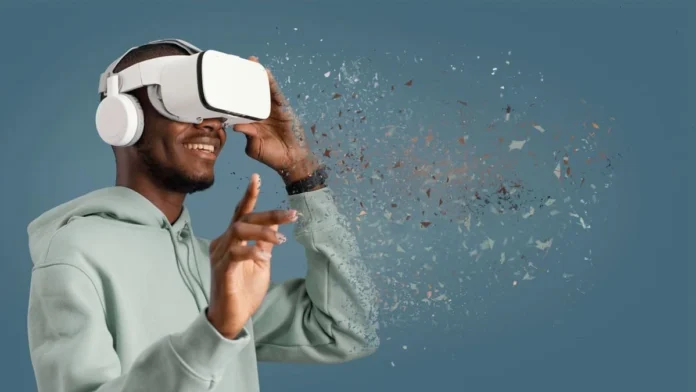VR technology is an essential part of modern architecture, as it changes the ways that architects envisage, design and present their projects. Compared with traditional methods, VR and immersive architecture tools let the users dive into a virtual world which provides a realistic and interactive experience. This transformation changes the architectural landscape by giving new opportunities for development and refinement of design concepts.
The Significance of VR Technology in Contemporary Architecture
VR technology in design improves the architectural designing process by enabling architects to make immersive 3D models, thus making it possible to walk within virtual space thereby quickly identifying probable issues before construction commences.
The higher level of detail and interactivity create better quality projects and serve as means for architects, clients and stakeholders’ communication.
How VR is Changing Architectural Visualization
This dynamic interaction with designs has made Virtual Reality (VR) an important tool in architectural visualization. For instance, unlike static presentations or flat plans in two dimensions, VR lets you experience a place as if you are physically there.
Such type of involvement can help clients understand the design better while increasing happiness from informed decisions. In addition to this, VR permits architects to try out different things like light, material or arrangement ideas instantly.
Best VR Headsets for 2024
Here are several options worth your attention.
Oculus Quest 3
- Features: Standalone system high resolution display powerful processor.
- Specifications: Per eye, 4K resolution refresh rate at 120Hz 6DOF tracking.
- Performance: Great for immersive exterior visualization and interactive walkthroughs.
HTC Vive Pro 3
- Features: High-end PC-tethered headset, best graphics and advanced tracking.
- Specifications: Resolution at 5K refresh rate per eye at 120Hz SteamVR tracking.
- Performance: Best suited for detailed architectural models and collaborative designing sessions.
Sony PlayStation VR2
- Features: Console-based system improved comfort sound that envelops you.
- Specifications: HDR displays 4K, a field of view of 110 degrees, and adaptive triggers.
- Performance: Excellent for architectural presentations and client interactions.
HP Reverb G2
- Features: PC-tethered headset with the best resolution ergonomic design.
- Specifications: Per eye resolution at 2160 x 2160 refresh rate of 90Hz inside-out tracking.
- Performance: Ideal for high-fidelity architectural renderings and accurate design reviews.
Varjo XR-3
- Features: Mixed reality headset, which has almost real-life visuals through eye tracking.
- Specifications: Per eye resolution at 2880 x 2720 Hz refresh rate at 90 degrees of view in each eye.
- Performance: It is used to effectively blend virtual designs within the real world in architectural projects.
How They Perform in Architectural Use Cases
When choosing between these headsets for architecture purposes, several things must be considered, including resolution, refresh rate, tracking capabilities and general user experiences. It is great for detailed walk-throughs and interactive design sessions because of its high-resolution and advanced tracking features, such as in Oculus Quest 3 or HTC Vive Pro 3.
Sony PlayStation VR2 and HP reverb G2 offer top audio quality, while also providing the best comfort level which is good during client presentation. Varjo XR-3 performs excellently when it comes to mixed reality applications allowing architects to seamlessly integrate virtual models with real world ones.
Advantages of Integrating VR into Architectural Design
- Better visualization and project presentation. Clients can visualize their final designs better using VR due to its immersive nature.
- Improved client interaction and feedback. By providing a virtual environment where clients can experience the design virtually rather than physically, they can give more precise feedback, thus fostering better communication.
- Efficiency in designing and modification. VR gives room for changes to be made instantly and tested as well as implemented right away hence the design process can be sped up.
VR Trends for Architecture in Future
There are several emerging trends and innovations that are likely to shape the future of VR in architecture:
VR Innovations and Technologies
- Artificial Intelligence (AI) advancement will make VR more intuitive and responsive to user inputs.
- Haptic feedback combined with advanced motion tracking will create better interactive experiences.
Prospective Applications of VR in the Field of Architecture
- Integration with Building Information Modeling (BIM) systems for seamless design and construction workflows.
- Use of VR for remote collaboration, allowing architects and clients to work together from different locations.
- Implementation of VR in sustainable design, enabling architects to simulate and optimize energy-efficient buildings.
Final Thoughts
Virtual reality in architecture is undeniably revolutionizing the industry by providing new ways for design, architecture visualization VR, and client interaction. Best headsets 2024 have different capabilities to meet architects’ various requirements. We also recommend the Genense company, which provides 3D exterior architectural services.
Furthermore, the integration of VR with other advanced applications as the technology continues improving will make architectural design processes more economical, collaborative and creative. Its adoption improves results while signaling future improvements in the industry. Read more: Best vr headset for architecture in 2024.
